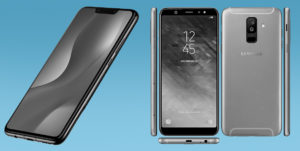
With more mid-range smart phones sporting fingerprint and face identification (ID) scanners along with so-called “infinity displays”, the home button as the main navigation pointer and security feature may slowly become a thing of the past if it hasn’t already.
Though Apple popularized the capacitative fingerprint scanner through its IPhone 5s in 2013, the first mobile devices to have fingerprint scanners were the Toshiba G500 and the G900 in 2007 though they were never launched in the market.
Instead, that honor went to the Motorola Atrix which launched in 2011. But it never achieved recognition the way Apple’s Touch ID did in its IPhone 5s and it became a steady feature in all succeeding IPhones all the way to the IPhone 8 Plus.
Apple then went a step further with its Face ID scanner which became available through its IPhone X in September last year and instituted in its latest IPhone X lineup of the XS, XR and XS Max early this month.
But as with all technology pioneered or popularized by the American consumer tech giant, it was only a matter of time before Chinese consumer tech companies like Huawei, Vivo and Oppo mass produced their own lineup of smartphones using said technology.
Competitively priced and sold in the Philippine market at P5,000 above to P15,000, these units employ both finger print and face ID and a virtual home button in place of a physical button.
Viable option
One such mid range device is the Oppo A3s, a 6.2-inch phablet (phone-tablet hybrid) which uses Face Unlock and has no physical home button.
Released in the country in July this year, it carries standard specs like dual rear cameras at 13MP and 2MP, nano (for additional storage) and dual SIM card slots and an 8MP front facing camera.
Powered by a 4230mAH battery, it also has 2 to 3 GB RAM and 16 to 32 GB of storage and is priced somewhere within the P6,700 to P6,990 range.
Sadly, it doesn’t have a fingerprint scanner which would have been a viable option to unlocking the phone.
Other mid-range devices that use either or both Face Unlock and fingerprint ID scanners are the Huawei Nova 3i launched last Aug. 18 and priced at P13,900 to P15,000 plus and Vivo Y81 launched in June this year and priced at P8,889 to P9,900.
Samsung, which introduced and instituted the virtual home button and navigation keys through its infinity displays, have now included these along with the Face ID and fingerprint scanners to its mid-range budget phones like the Samsung Galaxy J6 priced at P9,488 to P9,900 and its Galaxy A6 and A6 Plus (both released May 2018) that were released are priced at P11,500 plus to P15,000 and P13,000 plus to P15,000 plus respectively.
Even local manufacturers like Cherry Mobile are joining the home buttonless bandwagon with its latest unit, the S7 Flare Plus employing a full HD screen though the price had yet to be known as of presstime.
Refinements
Again, these security features which were previously available only on flagship units priced above P15,000 are being included in mid-range phones thanks in large part to the aggressive push of Chinese manufacturers out to corner the market.
Based on what they’ve rolled out so far, these smart phones offer quality build and flagship type specs and features at mid-range to budget friendly prices.
And we’re not even talking about the Xiaomi F1 Pocophone which, though sold at slightly above the mid-range budget line at P17,990 to P19,990, has top-of-the-line specs priced well below anything offered by Apple and Samsung’s top brands.
And for those who wish to acquire these units on installment basis, these units like the Samsung Galaxy J6 and A6 and A6 Plus are available through postpaid plans by Smart and Globe.
Though the phaseout of the home/navigation button may not come anytime soon, the signs are there. Whereas before the home button served as the fingerprint scanner, this feature had now been placed at the back and Samsung plans to integrate a virtual fingerprint scanner in its S10 unit.
And essential features like the power/sleep button as well as the volume control rocker/button will remain a mainstay until further refinements are made by the world’s consumer tech companies including but not limited to foldable, super AMOLED phones by Samsung.
Which begs the question: Will more home button-less smart phones with fingerprint and Face ID result in less cell phone thefts considering that these units cannot be opened without the owner’s fingerprint and/or face ID?
That remains to be seen though such technologies will be effective in preventing thieves from easily accessing phone numbers and other valuable data from the unit’s owner.

